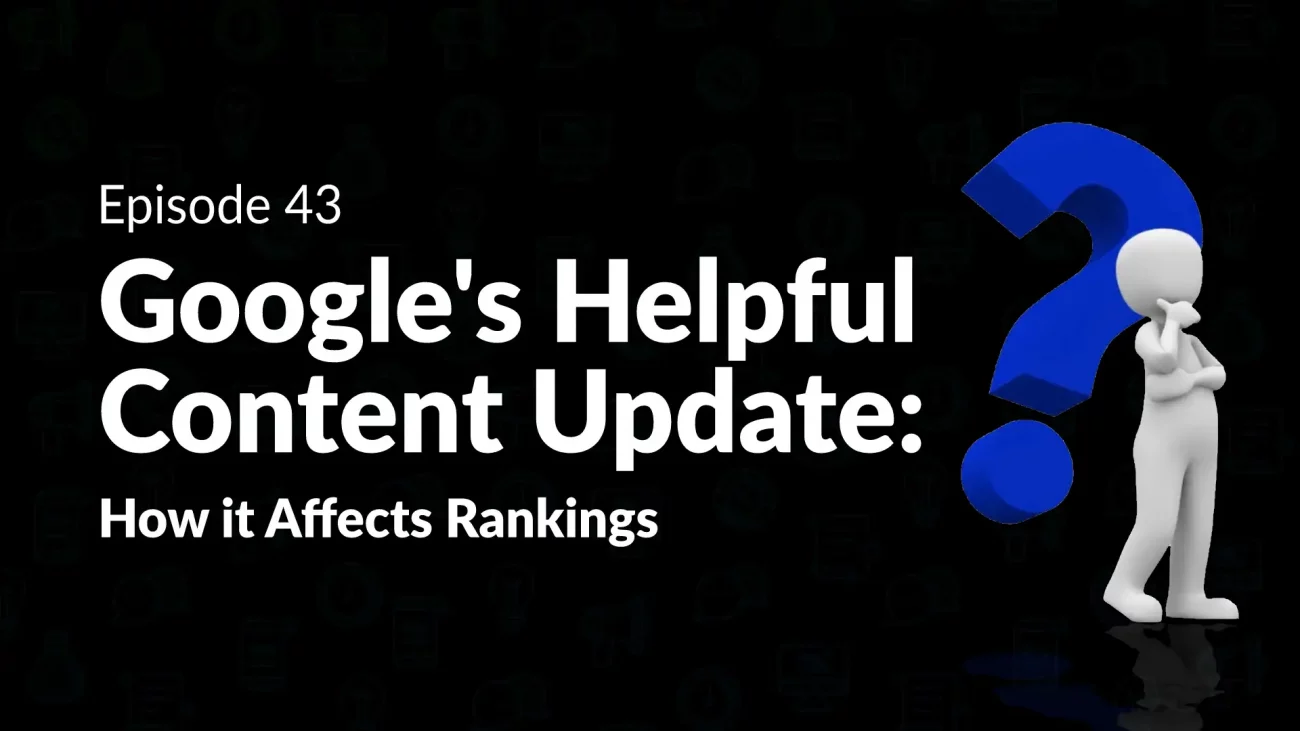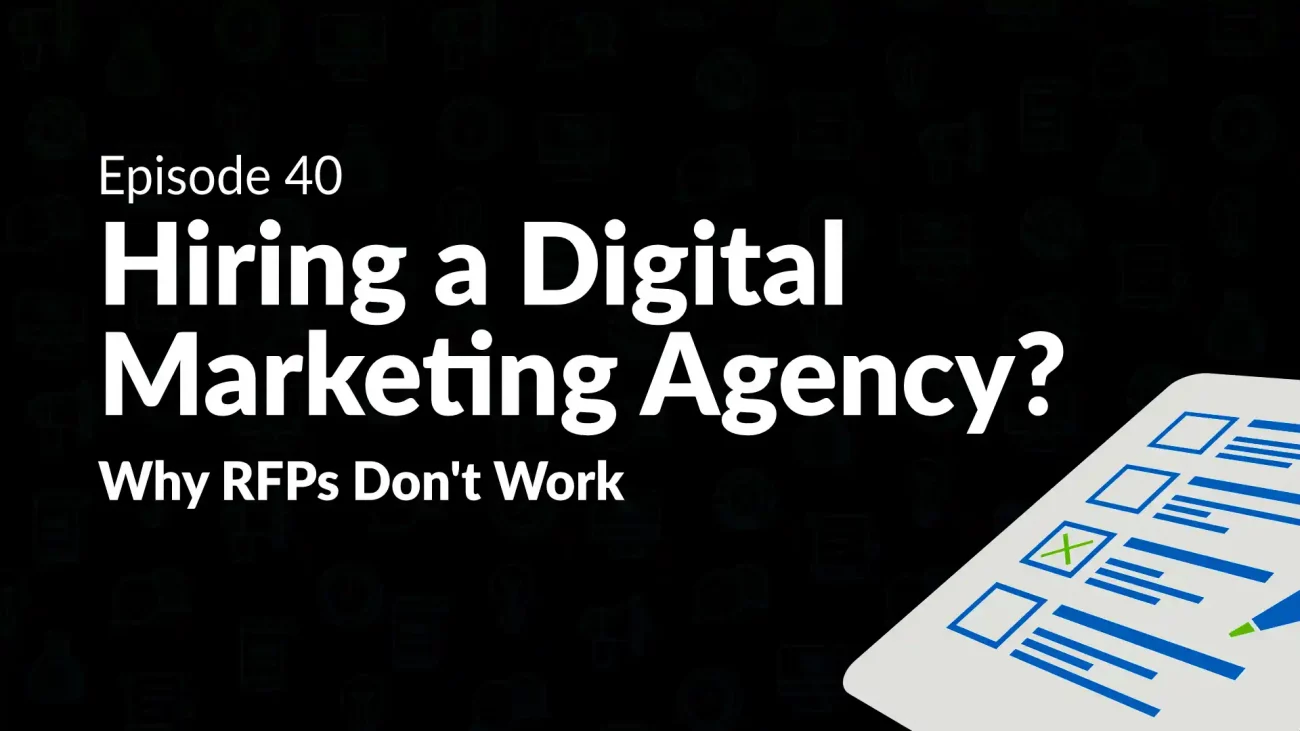Episode 32: More Data More Problems: Make Your Data Actionable to Improve Ad Performance
These days, everyone is trying to collect as much data as possible. User privacy efforts have shaken the marketing world, and the dust surrounding the impacts this will have on regulations for data collection has yet to settle. While it’s clear that more data than ever is being collected, many companies do not quite understand how to use that data. Reporting on high-level metrics is useful, but many are missing the opportunity to reveal insights through actionable reporting. Before taking action, it is important to verify your data, compare it internally against various periods, measure it against globally accepted benchmarks, and understand the context of the data in your organization. Once you understand the story around your data, you can proceed to create a strategy to improve performance. Making changes to how you target, which platforms you are advertising with, testing ad copies, and improving landing pages for better conversion, if done properly, can help any campaign.
In this week’s Digital Marketing Mondays, Hans and Devin discuss the best ways to utilize your organization’s data to effectively make changes and continuously improve your ad campaign’s performance.
Transcription:
Devin:
You’re listening to Digital Marketing Mondays. Each week we bring you new and exciting content from around the marketing industry and help give you, the marketer, insights into what’s happening. We’ll offer our advice and share some takeaways to help you develop better strategies for your marketing. Ideally, this will also help you improve your ROI as well. So with that, let’s tune into this week’s episode.
Devin:
Hey, Hans, how are you doing today?
Hans:
Hey, pretty good, Devin. Let me share something that’s on my mind, and that is… looking across our clients, seems everybody these days wants to collect data, they want to measure the results of their digital marketing, but some people don’t really take that information and act on it. And it can be frustrating to us because our philosophy is a little bit different. So I was wondering if we can dive into that topic a bit.
Devin:
Mm-hmm.
Hans:
So what do you suppose is really going on here when people, they get insights, but they don’t act on it. I mean, basically, it’s a wasted opportunity, right? I mean, why would people do that?
Devin:
Yeah, it’s a really good point I think. To some respects, there’s a level of executive leadership that suggests you need to report on all of these activities that you’re doing. And to some respect, I think we see that even our clients fall into this category too, that the goal is to show the performance not necessarily to improve the performance so to speak.
Hans:
Ah.
Devin:
Yeah, we definitely run into that all the time where… Let’s focus on creating this big PowerPoint deck that shows all these big numbers and everything will look good, without really sitting there and actually asking the questions: are these campaigns or these tactics that we’re doing the absolute best that they could be?
Hans:
Mm-hmm.
Devin:
Or using that as jumping-off points to say, “Hey, we need to go try some new things, test things out, and see what we can actually do to learn from these things, not just report on it at a high level and pray that the higher-ups buy it.”
Hans:
Yeah. Yeah. Okay. So to paraphrase a famous line from Glengarry Glen Ross, “Always be testing,” right? But not only testing, using that data to make improvements. So what are the tactics you would recommend here? I mean, you don’t just want to start implementing different campaigns just for the sake of implementing different campaigns, you’ve got to have a strategy here, you’ve got to be thoughtful about it because change just for the sake of change isn’t really going to work either. So why don’t you tell us a little bit about what you do in terms of figuring out, “Okay, how do I know that some data is showing me that a change is needed, and then how do I figure out what experiments I might want to pursue to try to improve the performance?”
Devin:
Sure. I think first and foremost, as with any good digital marketing person, you need to make sure that your data is correct. So let’s just start there, right?
Hans:
Yep.
Devin:
Make sure all of your reporting, the data, the metrics that you’re looking at are accurate, and in a way that you also have the correct metrics that you want to measure as well, which we could spend hours talking about what those correct metrics are by campaign type, platform, et cetera.
Hans:
Mm-hmm. Sure.
Devin:
We won’t dive into that. But first and foremost, just make sure that what you’re looking at is accurate.
Hans:
Yep.
Devin:
Beyond that, then I think what’s important is to not only look at internal benchmarks. If you’ve done something like this previously, how is it…
Hans:
Mm-hmm.
Devin:
… doing against that benchmark? And I’m not just talking about did it improve from the previous month? I’m suggesting even from the previous year, from the previous quarter. You want some more comparative views to be able to say, “are we heading in the right track? Is this generally going up or going down?”.
Devin:
But I think the other important thing that gets missed is then how is this also doing against the larger industry benchmarks or even against generally accepted global benchmarks as well? So what I’m looking for in that particular scenario though is where are the shortfalls? I think some of it just may require additional context around scenarios or particular story or a narrative to support how we may have come to that data point or come to that conclusion. But generally speaking, I think you’ll find when looking at that type of comparative data, you’re going to find discrepancies or, potentially, performance differences, in which case…
Hans:
Yep.
Devin:
… then that gives a jumping-off point to do further research and do further investigation. And then beyond that, I think that lends itself to then open up the opportunity for other testing, other ideas, and really challenging the status quo in that way.
Devin:
And that’s a little bit of an open-ended kind of answer in that way because obviously it depends on your specific circumstances, the campaigns you’re running, what you have been doing, et cetera.
Hans:
Yeah.
Devin:
But I think at the end of the day, all of it is in the spirit of, “Can you test it? Is it measurable? And does it have sufficient outcomes?”
Hans:
Yeah. Yeah.
Devin:
If you can really talk about those three things, and I guess even four, what are you going to do to improve it in the future?
Hans:
Right.
Devin:
Then I think you’re in really good shape.
Hans:
Cool. And in the what you could do to improve it or what you want to adjust, there’s a number of different factors there, right? There’s targeting, you could make adjustments to how you’re targeting people, you could make adjustments to where you’re spending your money, which platforms you’re spending money on. Are you doing search? Are you doing behavioral targeting? Are you doing locational? There’s a lot of different ways to do that and a lot of different platforms to do it on.
Hans:
Then, of course, everybody should be testing their ad copy, right? You shouldn’t just…
Devin:
Mm-hmm.
Hans:
… run the same ad over and over again, you should be always running a control and a test to see which one outperforms the other. That’s a matter of constant improvement. So it’s targeting, it’s messaging, it’s landing page design, there’s a lot of different factors here that can really have an outcome.
Hans:
And I think one of the biggest ones really, frankly, is landing page design. I think that if you can boost your conversion rate only slightly, you can spend a lot more money on advertising at that point because you can turn a money-losing campaign to one that’s actually making you money.
Devin:
Absolutely. And I think the other thing that gets lost sometimes with, especially, big executive presentations where the goal is just show as many good metrics as you possibly can around your marketing efforts, is the actual story that goes and supports it. There’s always a reason for why you see the numbers that you see.
Hans:
Mm-hmm.
Devin:
And so the goal should always be: how are you testing it, how are you measuring it, what was the actual outcome, and of course, how are you going to improve upon it in the future?
Hans:
Yeah.
Devin:
So it goes back to those fundamentals. Just like you would with any other tests, whether scientific or otherwise, you need to be able to do those four things sufficiently.
Hans:
We did a session a while ago, I don’t remember which number it was, but it was about there’s some agencies that just dump a lot of data on the client. And the data may be correct, and it may be voluminous, but the real value is, “Well, what does this mean? Does that mean we’re doing the right thing? Does that mean there’s room for improvement? If so, what kind of improvement?” That’s where the real value comes in, not just in having the data.
Devin:
Absolutely.
Hans:
So be sure that your data is meaningful. It’s not how much data you have, it’s really is it accurate, and is it relevant to help you make better decisions? So, all right, cool.
Devin:
Exactly.
Hans:
I think we’ve kind of covered that. Thanks, Devin. It’s always a pleasure.
Devin:
Likewise, Hans. Thank you.
Devin:
Thank you so much for tuning in. We really appreciate you taking the time out of your busy day to engage with our content. Whether you’re watching on YouTube or subscribed on our podcast apps, we appreciate you taking the time. Make sure to leave a comment down below and let us know any feedback that you have for us, we’re always watching the comments and engaging in any way that we can. So if you find this content useful, also make sure to subscribe or give it a big thumbs up. We appreciate it. Thanks so much.









